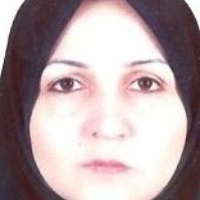Measurement of Compatibility New Urbanism Principles in the Neighborhoods that Formed in Different periods of urban development in Iran
Case study: Mozafari, Joye Moayedi, Emam Jomeh and Hoshang Mordi Kermani neighborhoods in Kerman
Author(s):
Article Type:
Research/Original Article (دارای رتبه معتبر)
Abstract:
The rapid growth of Kerman in recent decades with modernism thinking has caused the formation of new and marginal neighborhoods, for many reasons old neighborhoods have been converted to inefficient fabrics that their quality is not suitable for citizens' life. New Urbanism has confirmed new approaches with compact, mixed-use, walkable, and relatively self-contained communities by relying on historic lessons from the most beautiful and successful cities. This study aims to determine the compatibility of New Urbanism principles in the traditional, middle and new fabric neighborhoods of Kerman to increase their quality of life. The present study is applicable, and it utilizes descriptive, comparative and surveying methods. Data collection is gathered from the desk and field studies. GIS analytical functions and statistical methods are used to determine the degree of compatibility. The studied indicators are divided into three categories of transportation, physical and historical, and in seven principles, then they are evaluated by the four-level spectrum. According to research results, the indicators show a significant difference in the use of new urbanism principles in various neighborhoods formed in different periods of Kerman development. Mozafari historical neighborhood (with Bazar) and the new one Hoshang-Moradi with the geometric meaning of 3.03 and 1.81, respectively, have the highest and the least adaptation with the new urbanism principles. Also, the highest and lowest compatibility in the studied neighborhoods is related to connectivity and housing diversity principles. New neighborhoods concerning physical principles; and old neighborhoods concerning historical and transportation principles are more compatible with new urbanism. Average of compatibility in Hoshang-Moradi neighborhood in physical principle is 3.56 and in Mozafari neighborhood in principles of historical and transportation is 3.67 and 4. Due to the relative compatibility of the neighborhoods with the new urbanism principles, its guidelines can be used to improve their quality of life.
Keywords:
Language:
Persian
Published:
Journal of Geography and Planning, Volume:22 Issue: 65, 2018
Pages:
1 to 26
https://magiran.com/p1907930
سامانه نویسندگان
مقالات دیگری از این نویسنده (گان)
-
Exploring the role of urban regeneration dimensions and components on enhancing the condition of inefficient historical fabrics in Iran
Reza Alishahi, *
Motaleate Shahri, -
Narratives of the Social Relations of Economic Activities and Professions in Historical Neighborhoods of Yazd to Gain Lessons for Regeneration
*, Fateme Foroughinasab, Fatemah Esmaeilpoor
International Journal of Architectural Engineering & Urban Planning, Jul 2024



